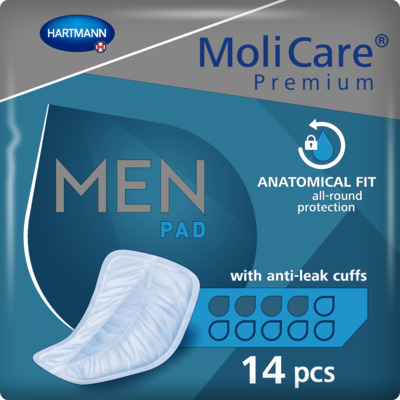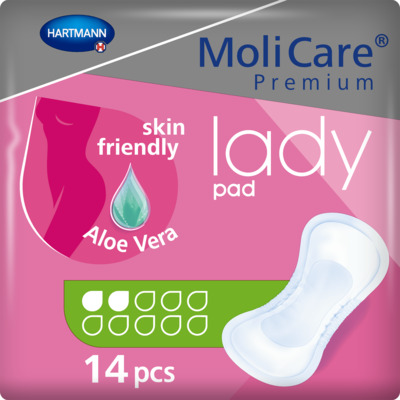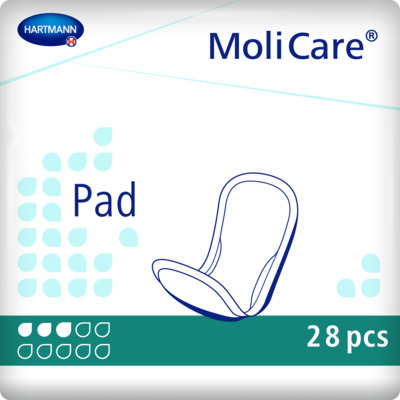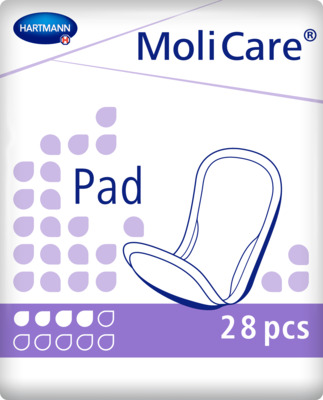Incontinence Advice
Functional Incontinence: What is it, and what can be done?
Functional incontinence can disrupt daily life, leading to frustration and embarrassment. Understanding its causes, signs, symptoms, and treatments can ease peace of mind and help manage the condition. Functional (urinary) incontinence is a lesser known form of incontinence when compared to urinary, stress, or mixed incontinence. It is commonly linked with being unable to reach the toilet in time. Fortunately, this article will cover functional incontinence in depth so that you thoroughly understand its meaning, from its causes, signs, symptoms, to treatments available to manage the condition. Key points: Understand what functional incontinence is and who is at risk. Common causes and symptoms to watch for. Effective treatment options and management strategies. Tips for preventing accidents and improving quality of life.

What is functional incontinence?
Functional incontinence, a specific type of urinary incontinence, significantly impacts those with mobility challenges or cognitive impairments. This condition occurs despite the individual's awareness of the need to urinate but results from their inability to reach the toilet timely.
Such delays can lead to unintended urine leakage or even a complete loss of bladder control. The implications extend beyond physical discomfort, often leading to embarrassment and additional skin irritation. If this happens, use these incontinence skin care products.
Signs of functional incontinence
Recognising the signs of functional incontinence can help to prevent the condition from getting worse, allowing your healthcare professional to offer a quicker diagnosis. Key indicators include:
Consistent dribbling or leakage of urine.
Involuntary complete bladder emptying.
The inability to hold urine long enough to reach a bathroom.
Noticeable urine odour on clothing or in the living area.
These signs and symptoms not only affect physical health but can also severely impact a person's emotional and social life.
Causes of functional incontinence
Functional incontinence can also arise from various factors that impair the ability to use the toilet by yourself. These may include include:
Cognitive disorders: Conditions like dementia or intellectual disabilities that disrupt the processing of the need to use the toilet.
Neurological disorders: Diseases such as multiple sclerosis, Alzheimers, or Parkinson’s disease, which may affect nerve functions essential for bladder control.
Physical limitations: Arthritis or other conditions that limit mobility or the ability to quickly remove clothing.
Environmental barriers: Obstacles such as poor lighting, stairs, or crowded spaces can hinder quick access to toilet facilities.
Medications and health conditions: Certain drugs, like diuretics or sedatives, and conditions like urinary tract infections (UTIs) or constipation, can exacerbate or lead to incontinence episodes.

Who is at risk of functional incontinence?
Functional incontinence can affect anyone but is more prevalent among specific groups:
Those with cognitive or neurological impairments.
Older adults, particularly those over 65, are more susceptible, making it the most common type of incontinence in nursing home residents.
People who are less physically active or have conditions affecting muscle and joint functions (e.g., weak pelvic floor muscles, thinning in vaginal tissues, etc.)
Those on medication that include diuretics or sedatives.
Diagnosing functional incontinence
Diagnosing functional incontinence begins with a thorough evaluation to differentiate it from other types of urinary incontinence. Health professionals often conduct a detailed medical history review and physical examination.
Key diagnostic tools may include:
Urinalysis: To check for infections or other underlying conditions.
Bladder Diary: Patients may be asked to record their liquid intake, frequency of urination, and instances of leakage.
Mobility and Cognitive Assessments: These help determine if physical or mental impairments contribute to incontinence.
Once the diagnosis of functional incontinence is confirmed, treatment focuses on managing both the symptoms and the underlying causes.
Improving accessibility
A simple and effective way to improve control of functional incontinence is by improving living conditions for the environment of the individual. This is extremely beneficial for those caring for the elderly and will need to communicate this using different methods, especially when caring for loved ones.
Creating an environment that allows for quick and easy toilet access is vital. Here are some effective strategies to adopt:
Home Modifications: Install grab bars, raised toilet seats, and adequate lighting to navigate easily to and within the bathroom.
Clothing Adjustments: Opt for garments with simple fastenings or elastic waists to facilitate quick changes.
Just Can't Wait: For public environments, using a FREE just can’t wait card will allow the individual to access a public toilet quickly and with ease.

Behavioural treatments
Behavioural techniques play a crucial role in managing functional incontinence:
Bladder training:
This involves increasing the intervals between bathroom visits systematically. Starting with visits every two hours, the goal is to extend the time gradually, allowing the bladder to build capacity and control.
Scheduled voiding:
For those with severe cognitive issues (see above), setting a regular schedule for toilet visits can prevent urgency and accidents. Being aware of how many times a day you should wee will aid in calculating whether irregular toilet visits are impacting the voiding issue.
Physical Therapies
Strengthening the pelvic floor muscles is essential for improving bladder control. Here are some recommended methods to try in a daily routine:
Pelvic Muscle Exercises (Kegels): These exercises strengthen the pelvic floor muscles, supporting the bladder and urethra. Identifying the right muscles during urination—by attempting to stop the flow mid-stream—is the first step. These can be performed for both men and women of different age groups. Be sure to not overtrain or over perform these. View our kegel exercises guide for men for more info.
Electrical Stimulation: Devices that deliver mild electrical pulses to stimulate muscle contractions can improve pelvic floor strength and effectiveness.
Vaginal Weights and Pessaries: These tools help train pelvic muscles by providing resistance and support, respectively, which is particularly beneficial in cases of stress incontinence (SUI).
Medical and surgical treatments
When behavioural and physical therapies are not enough to manage functional incontinence, medical interventions might be considered. Certain drugs can increase bladder capacity and reduce the frequency of contractions.
However, in severe cases, surgical options might be explored to improve the structural support of the bladder and urethra. An appointment with a healthcare professional should be scheduled first to determine which option to adopt.
Choose MoliCare® to manage functional incontinence
For those that urgently need assistance with maintaining bladder and bowel control, our wide range of incontinence products are hugely absorbent, comfortable and discreet. Our pads and liners, suitable for male incontinence and female incontinence of different levels, provide security against leaks, preserving dignity and hygiene.
How to prevent functional incontinence
While it's not possible to prevent the root causes of functional incontinence—such as neurological, muscular, or cognitive conditions—it is still possible to manage the condition effectively and mitigate its impact on daily life.
If you're dealing with a chronic condition that leads to functional incontinence, it may be a persistent part of your life.
Engaging with a healthcare provider to discuss optimal management strategies is crucial for maintaining quality of life.
Self-care methods
Managing functional incontinence involves daily practices and lifestyle adjustments that can significantly improve comfort and control:
Bladder Diary: Keeping track of fluid intake, frequency and timing of urination, and leakage incidents can provide valuable insights for adjusting habits and treatment approaches.
Diet: Avoid foods and drinks that irritate the bladder like caffeine, alcohol, and spicy foods that affect urinary frequency and urgency.
Weight: Maintaining a healthy weight reduces pressure on the bladder and pelvic floor muscles, easing the symptoms of functional incontinence.
Exercise: Routine walking not only strengthens the pelvic muscles but also helps recognise the signs of a filling bladder, allowing timely bathroom visits.
Smoking: Quitting smoking can decrease coughing fits, thereby reducing stress on pelvic floor muscles and improving incontinence symptoms.
When to consult a healthcare professional
It’s important to consult a healthcare professional as soon as symptoms of functional incontinence arise. Early diagnosis and intervention can prevent complications and improve outcomes. Discuss with your doctor the following information that will be integral to your diagnosis:
The potential causes of your symptoms and any necessary tests to confirm functional incontinence.
Recommended lifestyle adjustments and treatments.
Monitoring and managing the condition both at home and while away.
Any other symptoms to watch out for that might indicate complications or the need for different prevention methods.
FAQs
Can functional incontinence be cured?
Functional incontinence itself is not usually curable because it is often caused by underlying chronic conditions such as neurological disorders, cognitive impairments, or physical limitations. Treatment focuses on managing symptoms and improving quality of life.
What are examples of functional incontinence?
Examples of functional incontinence include situations where a person cannot reach the bathroom in time due to physical barriers (e.g., stairs, distant toilets or restrooms), cognitive challenges (e.g., Alzheimer's disease), or mobility restrictions (e.g., arthritis, Parkinson's disease).
What medication is used for functional incontinence?
There are no specific medications to treat functional incontinence directly; however, medications may be prescribed to address symptoms or related conditions. For example, anticholinergics or mirabegron may be used to manage urge symptoms, while other medications might be used to treat associated conditions like urinary tract infections or constipation.
Sources
NHS. (2008) Multiple Sclerosis. [online] Available at: https://www.nhs.uk/conditions/multiple-sclerosis/ [accessed 22/08/24]
Bladder and Bowel Community. (2017) FREE Just Can’t Wait Card. [online] Available at: https://www.bladderandbowel.org/help-information/just-cant-wait-card/ [accessed 22/08/24]

MoliCare® Premium Men Pad 4 Drops
<h2>Comfortable and absorbent</h2> <p>Why MoliCare for men? Hers are some of the key features of the MoliCare® Premium Men Pads from Hartmann:</p> <ul> <li>Discreet and comfortable</li> <li>Fits the male physique</li> <li>3-layer absorbent core</li> <li>Fast-absorbing system</li> <li>Anti-leakage cuffs</li> <li>Odour neutralisers</li> <li>Wide adhesive strip</li> <li>Skin-friendly</li> </ul> <p>With an affordable price and great quality guarantee, you cannot regret choosing MoliCare® Premium Men Pad 4 drops, equipped with anti-leak cuffs, and 14 pieces per bag.</p> <h2>Slim and discreet under clothing</h2> <p>MoliCare® Premium MEN Pads offer reliable support for men dealing with bladder weakness. Whether it's stress incontinence or urge incontinence, these pads for men are designed to provide a discreet and quick solution on the go. Simply place the pad before applying your underwear and secure it with the adhesive strip for worry-free protection. MoliCare® Premium MEN Pads offer full coverage for men facing very light to moderate bladder weakness.</p> <h2>Leakage protection for men</h2> <p>MoliCare® understands that each individual's incontinence needs are unique. That's why our incontinence products, including MoliCare® Premium MEN Pads, are available in different absorbency levels. You can find the perfect fit and protection for your specific requirements.</p> <h2>Reliable and soft on the skin</h2> <p>Our body-shaped absorbent pads are designed to deliver dependable and skin-friendly incontinence protection every day. Experience discreet comfort with the soft, cotton-like materials and the added benefit of an odour neutraliser, ensuring you feel fresh and confident throughout the day.</p> <h2>Fast delivery to your home</h2> <p>At HARTMANN Direct, we ensure a fast delivery service for all our products. Enjoy free delivery on orders over £50, making it convenient and hassle-free to receive the incontinence products you need. Our dedicated customer care team is here to discuss your incontinence product needs and answer any questions you may have. Call us today on 0800 028 9470 to experience the comfort and confidence that MoliCare® Premium MEN Pads can provide.</p>
MoliCare® Premium Lady Pad 2 Drops
<h2>Skin Friendly Pant Liners</h2> <p>For women that experience slight incontinence and bladder weakness, across different age groups, it can be a challenge to find the right bladder weakness product that is easy to apply and wear without the worry of potential leakages. Fortunately, we understand this approach, hence why we are happy to offer our MoliCare® Premium Lady Pad 2 drops, that is skin-friendly, Aloe Vera applied, and comes with 14 liners per bag.</p> <h2>Slim and discreet liners</h2> <p>Whether dealing with stress incontinence or urge incontinence, these panty liners offer a discreet and easy solution on the go. Simply place the pad in your underwear and secure it with the adhesive strip for all-round protection. Available in different absorbency levels, MoliCare® bladder weakness products cater to all levels of bladder weakness, ensuring secure care.</p> <h2>Control Bladder Weakness</h2> <p>Enjoy the benefits of these body-shaped absorbent panty liners, designed for women with bladder weakness. The pads offer discreet, reliable protection with features including odour control and fast absorption.</p> <p>With a wide adhesive strip, you can comfortably fix the pad in your regular underwear, providing secure and comfortable fixation. The pads are skin-friendly, featuring soft, breathable materials, including foam cuffs, and a top sheet treated with Aloe Vera.</p> <p>Keeping your skin healthy is a priority, which is why MoliCare® Premium Lady Pads have a skin-neutral pH value of 5.5 and an antibacterial finish. They are also dermatologically tested, offering peace of mind.</p> <h2>Buy pant liners online</h2> <p>Never worry about running out with our convenient order service and fast delivery direct to your door. Enjoy free shipping on orders over £50.</p> <p>If you need assistance, our professional customer service team is here to support you in choosing the right product. Reach out to us today at 0800 028 9470 and experience the comfort and reliability of MoliCare® Premium Lady Pads.</p>
MoliCare® Pad 3 Drops
<h2>Incontinence pads for men and women</h2> <p>Protect yourself against slight bladder weakness with the MoliCare® Pad 3 drops. Suitable for men and women, offering an ideal solution to regain control and live your active life without interruptions. Slimline, discreet, and contoured to fit your body, these incontinence pads ensure a comfortable and barely noticeable feel, providing exceptional dryness and protection for slight incontinence.</p> <p>Crafted with soft, skin-friendly fabric and a polyester backsheet, these incontinence pads ensure you can confidently go about your day, secure against minor leaks. The wide adhesive fixing strip keeps the pad securely in place, while the super absorbent core wicks moisture away from your skin. The elastic anti-leak edging adds an extra layer of reassurance, and odour neutraliser keeps you feeling fresh and confident. With the MoliCare® Pad 3 drops, you no longer need to let slight or occasional incontinence hold you back from enjoying life to the fullest. Simply adhere the pad to your underwear, and you will barely feel the difference.</p> <h2>Price match promise</h2> <p>Experience convenience with our fast delivery service, bringing your chosen products directly to your door. At HARTMANN Direct, we offer a price match promise and free delivery for orders over £50, making sure you receive both quality and value.</p> <p>If you need further assistance, our customer care team is here to help. Give us a call today at 0800 028 9470, and we'll find the perfect incontinence product tailored to your needs. Take charge of your life with the reliable and comfortable protection of MoliCare® Pad 3 drops. Say goodbye to worries and hello to an active and confident lifestyle.</p>
